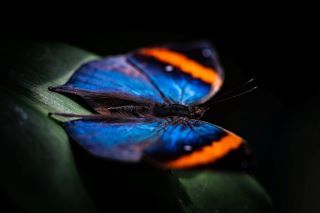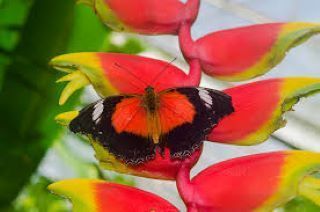The anomalies of moths and butterflies
Well, I intended this post to be mostly restful pictures, to marvel at the beauty of the many coloured and patterned butterflies around the world, (and we will do that, I promise!). But, as always, the more you start to delve into something, the more you find out, and I hope you will find this information1 interesting too!







One of the main things I was interested to find out was, what is the difference between a moth and a butterfly? I’m sure you can think of one thing immediately, and that is that moths are generally a duller, browney colour, and appear to be “furry”, whilst butterflies are usually more brightly coloured and delicate.
But there are lots of other differences too! Butterflies generally fly around in the day, and moths tend to fly at night, and also have bigger eyes as a result.
Butterflies sit at rest with their wings standing up (closed), but moths rest with them open flat. Also, the antennae of each are quite different to each other too! Moth antennae tend to be furry and the shape of a leaf or feather. Butterfly antennae tend to be long, bare, and have a bulb, or hook, at the tip.
But having said that, there are many exceptions to each of these generalisations too! Can you work out which are butterflies and which are moths in the pictures below?








From your school biology, you may remember learning about the classification system for all creatures. Can you remember the hierarchy? Its starts at the highest level with Kingdom, then Phylum, Class, Order, Family, Genus, and Species.
It turns out that moths, butterflies and skippers are all the Phylum of insects, which means that they have six legs, a set of antennae, and three parts to their body (the head, thorax, and abdomen).
They are then are grouped together in the Order Lepidoptera. This then divides into 125 Families of moths, and only five Families of butterflies and one Family of Skippers.
Have you ever heard of a Skipper? Well, a Skipper is grouped with butterflies, because it flies during the day, like a butterfly, but has a fat, furry body, like a moth! Confused?! I’m not surprised, so am I! There is more to this than meets the eye, with more anomlies than rules!!


The five Families of butterflies then divides into about 17,500 Species that are found all around the world except Antarctica. There almost 10 times as many moths as there are butterflies, with about 160,000 Species of moths. Who knew?
Australia has about 400 species of butterflies, many of which are not found anywhere else in the world.
All things great and small!
The largest butterfly is the Queen Alexandra Birdwing, which has a wingspan of up to 25cm (9.8 inches), is found in the rainforests of Papua New Guinea. The largest moth is the Atticus Atlas, and lives in the forests of South-East Asia.
The smallest butterfly is the Western Pygmy Blue, with a wingspan just 12-20mm (half to three quarters of an inch), is found in North America.




Where do butterflies and moths come from?
Butterflies have a lifecycle that has four different stages. The butterfly begins as an egg, which is laid on the plant that they will eat once they hatch. The next stage of the butterfly’s life is when it grows into a caterpillar, called a larva (larvae is plural). Its at this stage they will chew through just about anything near by, such as leaves, wool, fur, hair, or wood, to build up strength for the next stage to come.
The third stage of the lifecycle is when the caterpillar creates a cocoon (if a moth), or a chrysalis (if a butterfly). The caterpillar will spend multiple days, or weeks, inside this cocoon/chrysalis, until it is completely ready to emerge as a fully-formed butterfly.
The butterfly sits for a few hours until its wings have dried off, then it is ready to fly away.
How do they eat and drink?
Most butterflies only drink the nectar from flowers. They may also eat some pollen, tree sap, or rotting fruit. Unlike during their caterpillar stage, adult butterflies can only consume liquid. When they get thirsty, they will suck up water from damp patches on various surfaces or on leaves, from a tube like proboscis, which acts like a straw. Sometimes, they are even attracted to the salt that is in human sweat!
Like bees, they play an important part in the pollination of flowers. Caroline talked about the importance of bees as pollinators in one of her blogs during Bee Week: Click here.




Popular myth: Butterflies and moths as pests!
We all know about moths eating our woollen jumpers in the wardrobe, and the White Cabbage Butterfly, munching happily through veggie patches across the world. BUT, it is NOT the butterflies and moths doing the damage, as they only drink liquids. It is actually the larvae, ie. the caterpillar, (before the butterfly stage), which is the culprit!
But it is still worth trying to control these butterflies/moths (as humanely as possible), so they don't lay eggs and continue the cycle............
Butterflies protect themselves using camouflage and mimicry, such as spots on their wings that look like scary big eyes, to threaten or scare off any would-be predators.




The lifespan of moths and butterflies depends on the species. Some will live for just a few days, some a few weeks, and a very few, such as the Painted Lady, up to one year.

Interesting fact: One of the greatest migrations on Earth is by the Monarch Butterfly. Millions of them leave their summer breeding grounds in the north-eastern U.S. and Canada and travel more than 3,000 miles southwards to the mountains of central Mexico. Once there, the monarchs huddle together by the millions on the branches of oyamel fir trees, known as sacred firs.
No-one knows why they do this, except that it is obviously a safe micro climate for them for the winter. The trip is so long that one butterfly will not be able to complete the whole journey during its lifetime. In fact, it takes multiple generations of butterflies to get to the end of the migration.
We leave you now with a beautiful clip which follows the life cycle of the Monarch butterfly in all its stages, right through to its migration to Mexico…..
- Information sourced from Wikipedia and AustralianMuseum.net.au
- With thanks to Unsplash photographers: Jasmin Screiber, Erin Wilson, Anne Lambeck, Melissa Chabot, Marcio Cinci, TimeLynx, RemoteLands, Xuan Nuygen, Filipe Resmini, Jonathon Vasquez, Maurits Bausenhart, Krzystof Niewolny, Madhev Rajesh, James Wainscoat, Marie Louise. Thanks also to Marikou Lehmann and Renee Grayson via Flickr; ABC.net.au; Fine Art America; Pixabay; Australian Butterflies; Wikipedia; and Critter Science.
